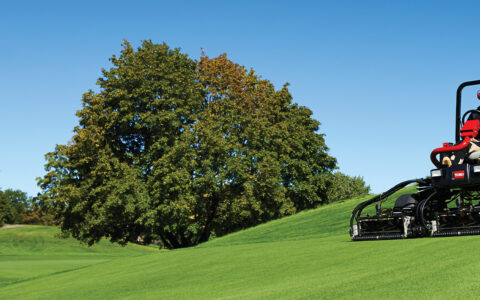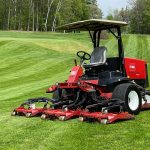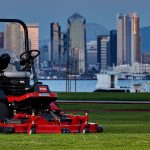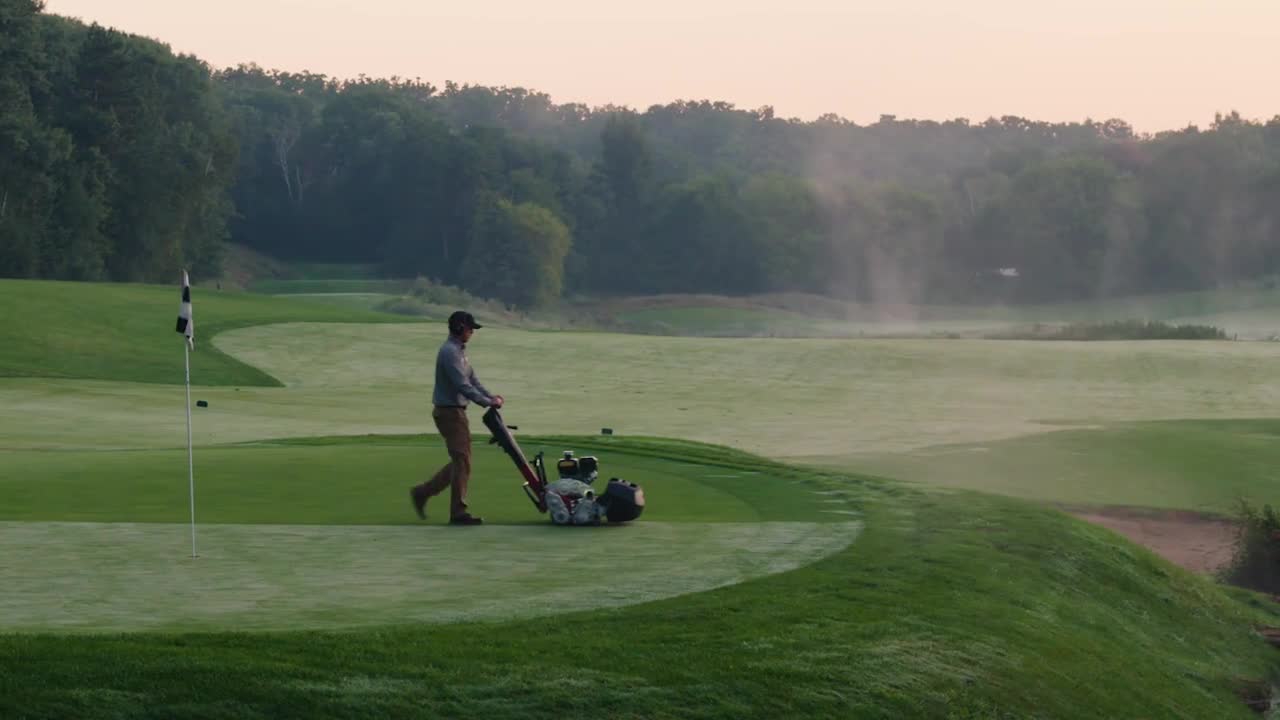100 Years of Innovation in Golf — Part 3: Roughs
This series of articles will attempt to capture just a few innovations, old and new, that Toro has developed over the past 100 years to help our customers meet the ongoing challenges of maintaining their golf courses. In each article, our intent is to quietly honor the customers, channel partners and Toro employees that have all contributed to our longevity and success.
For today’s golf courses, rotary mowers are a natural choice to cut roughs. However, that wasn’t always the case. In fact, Toro’s original rough mowers were tractor-mounted sickle bars, followed by a series of reel mowers. Rotary mowers didn’t gain popularity until the 1950s — soon after Toro made a pivotal decision that would set the company on a path to play a major role in the development of the rotary mower industry.
“One of the Best Business Decisions We Ever Made”
In a move Toro’s fourth president David Lilly would later describe as “one of the best business decisions we ever made,” Toro acquired the Whirlwind Corporation of Milwaukee, Wis., in 1948. At that time, Whirlwind was one of the few manufacturers of rotary mowers.
Early rotaries had not been widely accepted due to apprehension about their open deck design. But shortly after Whirlwind was acquired, Toro engineers designed a safer enclosed rotary deck that addressed those concerns. Consumer acceptance quickly grew, and as one leading magazine put it, the new design “almost singlehandedly” transformed rotaries from a small niche product to a dominant sector of the mowing equipment industry.
Evolving for Challenging Conditions
Since those early days, Toro has continued to introduce innovations in rotary mowers, serving the golf industry as well as professional and residential mower markets. Starting with the 24-inch Whirlwind and the 30-inch Grass King, customers have counted on Toro rotary mowers to tackle challenging conditions like those posed by golf course roughs.
In the 1960s, Toro unveiled the rugged 50-inch Trojan mower, which also offered multi-season versatility with attachments such as a snow thrower, a leaf blower, a leaf mulcher and a rotary broom. However, it was the launch of Toro’s Groundsmaster® series in 1973 that redefined commercial-grade rotary mowers.

Groundsmaster Breaks New Ground
The Groundsmaster 72 was the first all-hydraulic rotary with a water-cooled engine, putting Toro in a leading position with rotaries. According to a former Toro general manager/vice president of commercial equipment, this model “set the design standard for all competitors to follow.” The initial Groundsmaster 72 cut a swath 72 inches wide and was promoted as a high-capacity rotary mower with trimming capability that could become a versatile year-round maintenance unit with a variety of optional attachments.
Toro soon offered the Groundsmaster 72 with either gas or diesel power and side or rear discharge cutting decks. It could mow up to 20 acres a day but also maneuver close to fences, walls and buildings for trimming. (The trimming side actually turned on zero radius.) Other features included automotive-style steering and hydrostatic drive with no belts or chains in the power unit. The mowing unit also floated free of the power unit to follow ground contours for a smooth, even cut.
Groundsmaster Today
The Groundsmaster line has come a long way since then. Today’s models include the popular 9-ft. Groundsmaster 4500, a true rough mower. The Groundsmaster 4500 continues Toro’s legacy of innovation with features like Smart Power™ traction assist, which automatically adjusts ground speed when encountering heavy cutting conditions to maintain optimum blade speed. This helps prevent the mower from bogging down, so even less experienced operators can achieve a consistent cut on hills and thick patches.

The Groundsmaster 4500 also includes Toro’s exclusive SmartCool™ system, which briefly reverses the cooling fan to blast chaff and debris from the intake screens. This feature not only helps keep the engine cool, but also saves the time it would otherwise take for the operator to manually clean off the engine intake screen — ultimately reducing downtime. In addition, the Groundsmaster 4300 and 4500/4700 have innovative four-wheel drive systems (the CrossTrax® all-wheel drive system and full-time four-wheel drive, respectively) that allow them to tackle virtually any terrain.
Today’s 68-inch Groundsmaster 3500 is another example of Toro’s commitment to innovation. Functioning as both a precision trim mower and an efficient rough mower, the Groundsmaster 3500 makes it possible to maintain areas that would typically require two different types of mowers with one machine. Another innovation available on the Groundsmaster 3500 is Toro’s industry-leading Sidewinder® cutting units that can shift left and right a total of 24 inches, allowing the tire tracks to be shifted within the mowing path to reduce wear on the turf.
The Groundsmaster 3500, 4300 and 4500/4700 are all designed with Toro’s popular ground-following Contour™ Plus free-floating decks that deliver a clean cut while mowing challenging undulations without scalping. They also boast the industry’s toughest spindle assemblies. Toro’s spindle assemblies are tested to withstand workloads that would destroy most spindle assemblies. They feature a cast iron housing with a massive 9-inch diameter base that absorbs impacts and distributes the load across the deck shell — along with tapered roller bearings that last longer than ball bearings.
The Story Continues
If you’re interested in the evolution of Toro utility vehicles, you won’t want to miss the next article in this series coming up in the August issue of Toro Advantage. You can also read Part 1 on Fairways and Part 2 on Greens in past issues of the newsletter. Stay tuned as we continue exploring how the innovations of the past paved the way for today’s technology!





